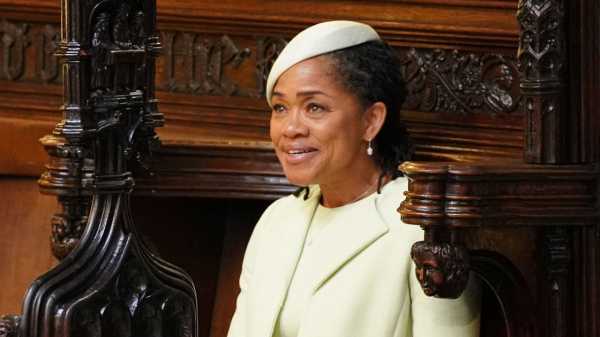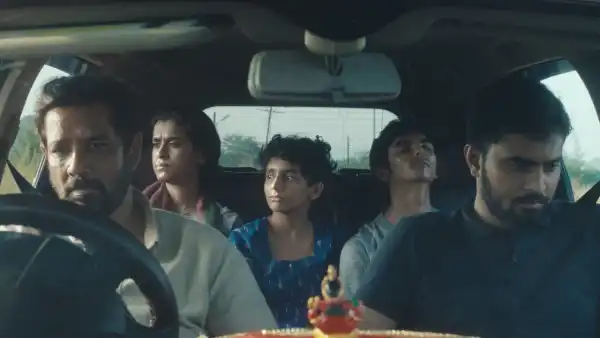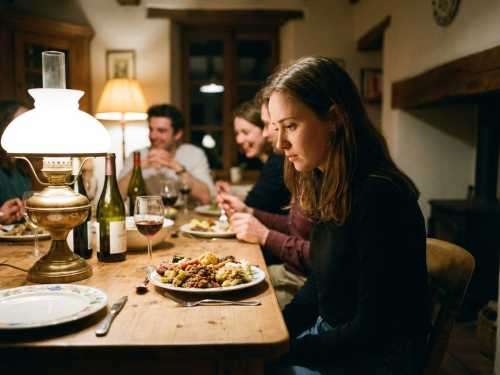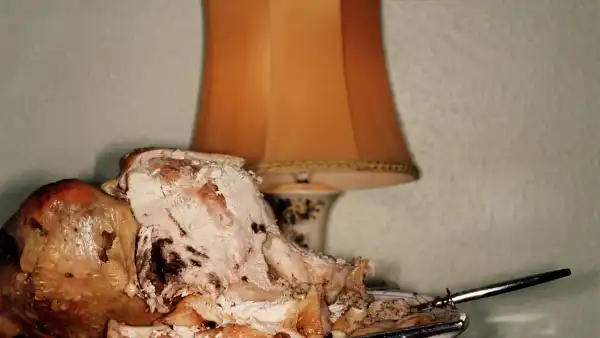
The day of the royal wedding, we could not keep our eyes off her. What was she thinking, as she sat in the pews of the five-hundred-year-old chapel, enveloped in history and irony? I mean the mother of the bride, Doria Ragland. A millennium of world-shifting encounters—of violence and of romance and of acts in between—produced this scene: the sixty-one-year-old Ragland, an American who teaches yoga and does social work in Culver City, California, sitting in the opposite and equivalent seat to Queen Elizabeth II. They’d agreed on green, the color of beginnings—Ragland in churchy, pastel Oscar de la Renta, the Queen in electric-lime Stewart Parvin. One is a descendant of the enslaved, a child of the Great Migration and Jim Crow and seventies New Age spirituality; the other, the heir to and keeper of empire. Blood had long ago decided what life would be like for both.
But love barges in and finds a way. Love brings together Prince Harry and Meghan Markle, whose train of identifiers—biracial, actress, Angeleno, divorcée, feminist, former life-style blogger—complete the Mad Libs of the new American vogue. Love brings together their families: the House of Windsor and a one-woman house. Genuine attraction seemed to pulse between them, as Harry, biting his lip, giddily whispered to his bride, “You look amazing.” Markle’s doe eyes glinted. Nearby, Ragland radiated with what looked like maternal pride. Certainly it was more complex than just that.
Ragland isn’t an actress like her daughter, but she said many things with her face. Photographs of her and Markle pressed close to one another in the Rolls-Royce on the way to the chapel show the mother trying on a regent’s wave, smiling warmly but tentatively. Inside, she executed her duties with grace. Her locs had been swept beneath her pillbox hat; the shine of her tiny nose ring gleamed like the shine in her eyes. There was not much emoting in the crowd of royal fascinators, although many screwed their faces as Bishop Michael Bruce Curry, the first black head of the Episcopal Church, thundered in his sermon about the possibility of a “new world.” But one could perceive Ragland softly reeling beneath her composure. Her lips trembled as her daughter walked down the aisle. She cried gently. When Curry spoke about the example of Martin Luther King, Jr., and the power of radical, social love, she nodded unreservedly; when the East London choir roused the room with Ben E. King’s “Stand By Me,” she swayed. Sometimes the cameras would catch Ragland as if in a trance, lost in some intimate thought.
What we know of the relationship between mother and daughter has an “us against the world” feel to it. After her parents divorced, when she was six, Markle spent weekdays with her mother. Ragland doted on her only child, calling her “Flower.” When Markle became wealthy, she paid for her mother to attend graduate school; in a Mother’s Day post on her blog, she swooned with reverence over Ragland’s resilience. There’s no “Imitation of Life” drama here, in which the mixed-race daughter shuns her darker-skinned mother. Markle clearly delights in what she euphemizes as her mother’s “free spirit.” But they are different women. Markle makes it a point to call herself biracial. She vaguely invokes the “wounds” of American history, but is careful not to frame herself as a race hero. The skin of the mother is honey brown, but the daughter has been cast as ethnically ambiguous. In essays, Markle recalls that, as a child, strangers in the Valley mistook her mother for her nanny. In front of billions, Markle entered one of the oldest halls of whiteness, with the flowers of former colonies sewn onto her veil, and blended in. Ragland stood out.

Further Reading
More from The New Yorker on the royal wedding.
It is true that Markle and her groom beautifully threaded black rituals throughout the ceremony. But claims about the wedding’s “wokeness” are a little jarring. This was a royal marriage set against the backdrop of the government threatening to deport Britons of the Windrush generation. Was that melancholy in Ragland’s eyes? A worry about whether her daughter would be truly accepted in the family, and what she may have to do to usher in that acceptance? Did she recall the Christmas luncheon that Markle attended in December, at which Princess Michael of Kent wore a blackamoor brooch clipped to her jacket? Markle had longtime friends in her party, but Ragland was the sole representative of her family. Ragland’s mother, Jeannette, who reportedly watched Markle as a child while Doria worked, died in 2000. Through her presence, Ragland implied a lineage of black women—and represented the fraught lineage of a nation.
It should not be lost on anyone that, despite the pitiful shenanigans of her ex-husband, Thomas Markle, and the gossiping of her ex-step-children, Ragland flew to Heathrow to do what black women do: straighten the mess up. One vision of the black mother depends on this kind of self-effacing altruism. The public has fallen for Ragland. On Twitter, people speculate that Lady Diana Spencer, whose legend of social rebellion is especially idolized by black women, would have adored her. At an afternoon tea on Friday, Ragland “charmed” the Queen, and she has quit her job at the mental-health clinic to avoid the paparazzi. The big interview will likely come via Oprah, who, swaggering into the castle on Saturday in pink, called attention to her own supremacy. But how Ragland will participate in the cult of her daughter’s marriage is yet to be seen. There is new pressure on the Duke and Duchess of Sussex—who take their titles after the first and only Duke of Sussex, who supported abolition—to liven up the monarchy’s social reputation. The hunger for a cordial kind of racial harmonizing is strong. I know Markle feels that burden, and I know that Ragland does, too.
Sourse: newyorker.com






